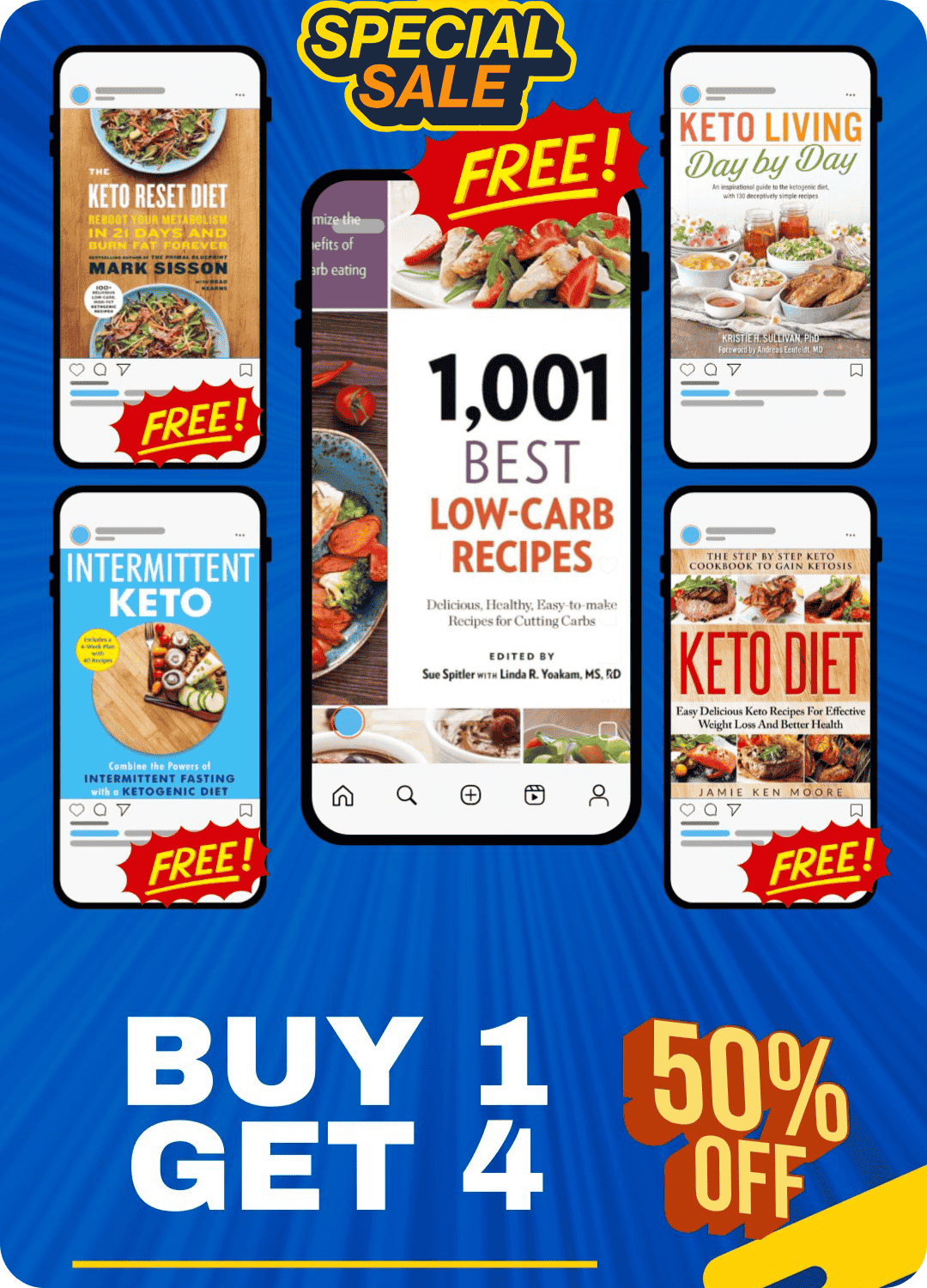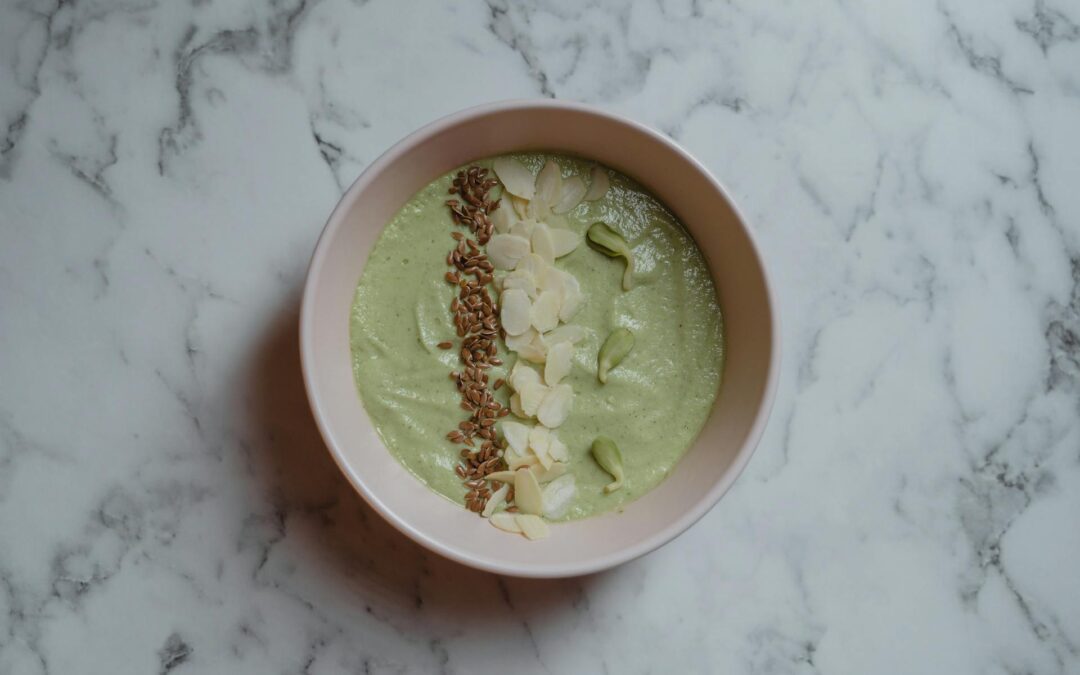Welcome to your ultimate guide to a Low-Carb Vegetarian Meal Plan. In this article, we’re diving deep into everything you need to know about low-carb vegetarian eating, from understanding the basics to following a well-structured 7-day meal plan that will help you achieve weight loss success, improve your energy levels, and boost overall health. Whether you’re new to this lifestyle or a seasoned vegetarian looking to optimize your diet, you’re in the right place.
Introduction
In recent years, many health enthusiasts have embraced the Low-Carb Vegetarian Meal Plan as an effective strategy for weight loss and improved wellness. Balancing a diet that is both low in carbohydrates and strictly vegetarian might seem challenging at first, but it offers a powerful synergy of increased energy, controlled blood sugar levels, and sustained fat burning.
Why Consider a Low-Carb Vegetarian Meal Plan?
- Increased Metabolic Efficiency: Reducing your carb intake can prompt your body to burn fat more efficiently.
- Plant-Powered Nutrition: Emphasizing wholesome vegetables, fruits, and plant proteins enriches your diet with necessary vitamins and antioxidants.
- Sustainable Lifestyle: Transitioning gradually with a structured meal plan helps maintain long-term results without feeling deprived.
This article is structured to guide you step-by-step through the journey of transforming your eating habits. We’ll discuss the scientific basis behind low-carb and vegetarian diets, offer practical tips for transitioning, and provide a detailed 7-day meal plan loaded with nutritious recipes and actionable advice.
As you read on, you’ll discover how small, thoughtful changes can make a big difference in your health and well-being. By the end of this guide, you’ll feel confident and empowered to commit to a lifestyle that nourishes your body while also supporting your weight loss goals.
What Is a Low Carb Vegetarian Diet?
A Low-Carb Vegetarian Meal Plan is a dietary strategy that combines the principles of a low-carbohydrate approach with a vegetarian lifestyle. Instead of relying on high-carb staples like bread, pasta, and rice, you focus on consuming nutrient-dense vegetables, legumes, nuts, and plant-based proteins. (1)
The Basics
- Low-Carb Foundation:
- Emphasizes reducing starchy vegetables, refined grains, and sugary foods.
- Prioritizes healthy fats (avocado, olive oil) and proteins from plant sources such as tofu, tempeh, and legumes.
- Vegetarian Principles:
- Excludes all types of meat but includes dairy and eggs in many cases (or follows a vegan approach if preferred).
- Reinforces a focus on whole, unprocessed foods that are naturally low in carbohydrates.
Key Nutritional Components
- Macronutrients:
- Proteins: Essential for muscle repair and satiety. Think beans, lentils, tofu, and nuts.
- Fats: Healthy fats are critical for energy and the absorption of vitamins. Consider avocado, olive oil, and seeds.
- Carbohydrates: Focus on complex carbs from non-starchy vegetables and some fruits to maintain energy without spiking blood sugar.
- Micronutrients:
How Does It Compare?
Unlike traditional high-carb vegetarian diets, a Low-Carb Vegetarian Meal Plan uses a balanced approach to achieve sustained energy levels and effective weight management. Here’s a quick comparison:
- Traditional Vegetarian Diet: Higher in carbohydrates with reliance on whole grains.
- Low-Carb Vegetarian Diet: Focuses on reducing carbs while boosting protein and healthy fats for improved metabolic functioning.
Understanding these nuances gives you a solid foundation to appreciate the benefits that follow.
Health Benefits of a Low Carb Vegetarian Diet
Transitioning to a Low-Carb Vegetarian Meal Plan isn’t just about weight loss—it’s also about comprehensive health improvements. Let’s explore the many ways this lifestyle benefits your body: (2)
Weight Loss & Metabolic Health
- Enhanced Fat Burning:
- Lowering carbs drives your body to use fat as its primary fuel.
- This metabolic switch supports steady, sustainable weight loss over time.
- Improved Insulin Sensitivity:
- Reducing sugar spikes enhances insulin function, which is essential for preventing type 2 diabetes.
- Stable Blood Sugar:
- Consistent energy levels are maintained without the crash associated with high-carb meals.
Cardiovascular Health
- Lower Cholesterol Levels:
- A diet rich in plant-based fats and proteins helps maintain healthy cholesterol ratios.
- Reduced Blood Pressure:
- Emphasizing whole, unprocessed foods can lead to natural reductions in blood pressure over time.
Additional Benefits
- Increased Energy:
- With a focus on nutrient density, you’re fueling your body with the essential vitamins and minerals needed for high energy levels throughout the day.
- Improved Digestion:
- High fiber intake from vegetables aids digestion and supports a healthy gut microbiome.
- Mental Clarity:
- Many followers of a Low-Carb Vegetarian Meal Plan report better mental focus and improved mood.
Backed by Science
Multiple studies have shown that reducing carbohydrate intake while emphasizing plant-based proteins can not only promote weight loss but also enhance overall health. This dual approach helps combat chronic diseases and improves long-term wellness.
By integrating these principles into your daily life, you’re not just dieting—you’re embracing a way of living that honors your body’s needs.
How to Transition to a Low Carb Vegetarian Diet
Embarking on a Low-Carb Vegetarian Meal Plan might sound challenging at first, but with a step-by-step approach, you can smoothly transition and enjoy lasting success. Here are practical strategies to make your journey as seamless as possible:
Self-Assessment & Planning
- Evaluate Your Current Diet:
- Take note of your typical carbohydrate sources and identify which items can be reduced or replaced.
- Set Clear Goals:
- Define what you want to achieve (weight loss, increased energy, improved overall health).
- Create a Transition Timeline:
- Begin by gradually cutting out high-carb foods rather than eliminating them abruptly.
Practical Transition Steps
- Modify Your Plate:
- Replace refined grains with nutrient-dense vegetables.
- Use plant proteins like tofu and tempeh in place of meat.
- Build a Balanced Meal Structure:
- Aim for each meal to include a source of protein, healthy fats, and low-carb vegetables.
- Stay Hydrated:
- Drinking water helps manage hunger and supports metabolic processes.
- Monitor and Adjust:
- Keep a food diary to track your progress and note any improvements in energy or mood.
Tips for Success
- Meal Planning:
- Dedicate time once a week to plan your meals; this is key to sticking with your diet.
- Grocery Lists:
- Organize your shopping around whole foods and avoid aisles heavy with processed goods.
- Experiment with Flavors:
- Use a variety of herbs and spices to keep meals exciting and flavorful.
- Educate Yourself:
- Learn about nutritional benefits and experiment with different recipes to find what works best for you.
Transitioning is a process, and every step you take brings you closer to a healthier lifestyle. With consistency and enthusiasm, this Low-Carb Vegetarian Meal Plan will become a natural part of your daily routine.
7-Day Meal Plan for Weight Loss
Below is a detailed 7-day meal plan designed to keep your body fueled, satisfied, and on track for weight loss. Every day incorporates a balanced mix of macronutrients, ensuring a nutrient-rich Low-Carb Vegetarian Meal Plan that is both exciting and sustainable. (3)
Day 1: Fresh Start
- Breakfast:
Smoothie Bowl- Blend unsweetened almond milk, spinach, half a frozen avocado, and a dash of chia seeds.
- Top with sliced strawberries and crushed almonds.
- Mid-Morning Snack:
Veggie Sticks & Guacamole- Enjoy crunchy carrot and celery sticks with a small serving of homemade guacamole.
- Lunch:
Kale & Quinoa Salad- Combine massaged kale with cooked quinoa, cherry tomatoes, cucumber, and red onion.
- Toss with lemon vinaigrette.
- Afternoon Snack:
Roasted Chickpeas- Season the chickpeas with turmeric and cumin, then roast until crispy.
- Dinner:
Zucchini Noodles with Avocado Pesto- Spiralized zucchini tossed with a creamy avocado-basil pesto sauce.
- Garnish with toasted pine nuts.
- Optional Dessert:
Coconut Yogurt & Berries- A light bowl of unsweetened coconut yogurt topped with mixed berries.
Day 2: International Inspirations
- Breakfast:
Tofu Scramble- Sauté crumbled tofu with spinach, mushrooms, and bell peppers.
- Season with turmeric and nutritional yeast.
- Mid-Morning Snack:
Nut Butter & Celery- Spread almond butter on celery sticks for a crunchy, satisfying bite.
- Lunch:
Mediterranean Salad Wrap- Fill a low-carb whole-grain wrap with hummus, olives, diced cucumbers, tomatoes, and fresh parsley.
- Afternoon Snack:
Mixed Nuts & Seeds- A small portion of walnuts, sunflower seeds, and pumpkin seeds.
- Dinner:
Stuffed Bell Peppers- Fill bell peppers with a mixture of cauliflower rice, black beans, and tomatoes.
- Top with a sprinkle of vegan cheese before baking.
- Optional Dessert:
Dark Chocolate & Raspberries- Enjoy a few squares of dark chocolate paired with fresh raspberries.
Day 3: Protein-Powered Days
- Breakfast:
Chia Pudding- Soak chia seeds overnight in almond milk with a dash of vanilla extract.
- Layer with pureed blueberries in the morning.
- Mid-Morning Snack:
Edamame Pods- Lightly salted edamame provides a protein boost.
- Lunch:
Spinach & Lentil Soup- A hearty soup simmered with spinach, lentils, diced tomatoes, and carrots.
- Afternoon Snack:
Sliced Bell Peppers & Hummus- A colorful array of bell pepper slices served with a classic chickpea hummus.
- Dinner:
Eggplant Parmesan (Vegan Style)- Baked eggplant slices layered with tomato sauce and sprinkled with nutritional yeast.
- Optional Dessert:
Baked Apple Slices- Cinnamon-baked apple slices with a drizzle of almond butter.
Day 4: Creative Low-Carb Substitutions
- Breakfast:
Avocado Toast on Low-Carb Bread- Toasted low-carb bread topped with mashed avocado and a squeeze of lime.
- Mid-Morning Snack:
Cucumber Slices with Lemon Zest- Refreshing cucumber slices lightly sprinkled with sea salt and lemon zest.
- Lunch:
Cauliflower Rice Stir-Fry- Sautéed cauliflower rice with mixed vegetables, tofu, and a splash of tamari.
- Afternoon Snack:
Seaweed Snacks- Light and crispy seaweed chips for a unique crunch.
- Dinner:
Portobello Mushroom Burger- A grilled Portobello cap served on a lettuce wrap, topped with avocado and tomato slices.
- Optional Dessert:
Unsweetened Greek Yogurt with a Dash of Cinnamon- Creamy yogurt mixed with cinnamon and a few walnut pieces.
Day 5: Global Flavors with a Twist
- Breakfast:
Coconut Flour Pancakes- Fluffy pancakes made with coconut flour and almond milk, served with a berry compote.
- Mid-Morning Snack:
Mixed Berry Medley- A small bowl of fresh mixed berries.
- Lunch:
Mexican-Style Cauliflower Tacos- Low-carb tortillas filled with seasoned cauliflower, avocado slices, and salsa.
- Afternoon Snack:
Sliced Jicama with Lime & Chili Powder- Crisp, refreshing jicama sticks sprinkled with chili powder and lime juice.
- Dinner:
Thai-Inspired Zoodle Salad- Zucchini noodles tossed with shredded carrots, red cabbage, and a tangy peanut dressing.
- Optional Dessert:
Mango Slices with a Hint of Chili- Fresh mango slices dusted lightly with chili powder.
Day 6: Nourishing & Fiber-Rich Options
- Breakfast:
Overnight Oats (Low-Carb Version)- A mix of unsweetened almond milk, chia seeds, and a small portion of oats (if tolerated) with diced pear.
- Mid-Morning Snack:
Roasted Almonds & Dried Cranberries- A small handful of almonds with a few unsweetened cranberries.
- Lunch:
Rainbow Veggie Buddha Bowl- A bowl loaded with mixed greens, roasted sweet potato cubes, avocado, red cabbage, and a drizzle of tahini.
- Afternoon Snack:
Fresh Veggie Crudité with Cashew Dip- Sliced radishes, zucchini, and snap peas are served with a creamy cashew dip.
- Dinner:
Butternut Squash Curry- A hearty curry with roasted butternut squash, spinach, and coconut milk served over a small portion of cauliflower rice.
- Optional Dessert:
Berry Sorbet (Homemade)- Blended frozen berries with a splash of almond milk for a refreshing treat.
Day 7: Recap and Personalization
- Breakfast:
Green Detox Smoothie- Blend kale, cucumber, green apple, and ginger with water for a revitalizing start.
- Mid-Morning Snack:
Fresh Fig Halves with Almond Butter- Sweet figs dipped in almond butter for natural sweetness.
- Lunch:
Hearty Lentil Salad- A robust salad with lentils, diced red pepper, parsley, and lemon vinaigrette.
- Afternoon Snack:
Roasted Brussels Sprouts- Crispy Brussels sprouts roasted with olive oil and a touch of garlic.
- Dinner:
Stuffed Zucchini Boats- Zucchini halves filled with quinoa, tomatoes, and a medley of spices baked to perfection.
- Optional Dessert:
Fresh Peach Slices with Mint- Ripe peach slices are topped with finely chopped mint leaves.
Each day of the meal plan is designed to give you a balanced experience while steadily guiding you on your journey. Enjoy experimenting with these vibrant flavors, and take note of how your body and energy levels respond over the week.
Low Carb Vegetarian Recipes and Nutritional Information
In this section, we dive deeper into some of our most beloved recipes from the Low-Carb Vegetarian Meal Plan and break down their nutritional benefits. Understanding the science behind these dishes helps you make informed choices and tailor your meals to your personal needs.
Detailed Recipes & How-To Guides
- Creamy Avocado-Basil Pesto Zoodles:
- Ingredients: Zucchini noodles, ripe avocado, fresh basil, lemon juice, pine nuts, salt, and pepper.
- Method:
- Blend avocado, basil, lemon juice, and a few pine nuts until smooth.
- Toss with zucchini noodles and top with additional pine nuts.
- Nutritional Benefits:
- Rich in healthy fats and antioxidants that support heart health.
- Tofu Scramble:
- Ingredients: Firm tofu, turmeric, nutritional yeast, bell peppers, spinach, onions, salt, and pepper.
- Method:
- Crumble tofu and sauté with vegetables and spices until lightly browned.
- Serve with a side of low-carb toast.
- Nutritional Benefits:
- High in plant-based protein, iron, and calcium.
- Hearty Lentil Soup:
- Ingredients: Lentils, tomatoes, spinach, carrots, celery, vegetable broth, garlic, and herbs.
- Method:
- Simmer vegetables and lentils in broth until tender.
- Season with herbs and a pinch of salt.
- Nutritional Benefits:
- Packed with fiber, protein, and essential vitamins for sustained energy.
Nutritional Breakdowns
For each recipe, consider:
- Macronutrients:
- Protein levels to support muscle repair.
- Healthy fats for balanced energy.
- Low carbohydrates to keep insulin levels steady.
- Micronutrients:
- Customization Tips:
- Add extra greens to boost fiber.
- Adjust seasoning to your taste for a personalized touch.
Using these guides, you can confidently experiment with your own Low-Carb Vegetarian Meal Plan recipes and track the nutritional benefits of every meal you enjoy.
Grocery List & Meal Prep Tips
A well-structured grocery list and a few practical meal prep tips can make sticking to your Low-Carb Vegetarian Meal Plan effortless and fun.
Essential Grocery List
- Produce:
- Spinach, kale, zucchini, broccoli, bell peppers, tomatoes, cucumbers, carrots, and avocados.
- Proteins & Legumes:
- Tofu, tempeh, lentils, chickpeas, black beans, and edamame.
- Healthy Fats:
- Avocado oil, olive oil, nuts, and seeds.
- Dairy & Alternatives:
- Unsweetened almond milk, coconut yogurt, and low-carb cheese alternatives.
- Herbs, Spices, & Condiments:
- Turmeric, nutritional yeast, basil, lemon, garlic, ginger, and fresh herbs.
Meal Prep Strategies
- Weekly Planning:
- Dedicate time each week to plan, shop, and prepare your meals.
- Batch Cooking:
- Cook large portions of soups, salads, and grain alternatives like cauliflower rice to be used throughout the week.
- Portion Control:
- Use meal prep containers to store pre-portioned servings for quick access.
- Flexible Adjustments:
- Keep extra portions for those days when you need a quick snack or an additional meal.
With a little planning and organization, your grocery trips become more efficient and your meals more enjoyable.
Additional Tips for Weight Loss & Maintaining a Low Carb Vegetarian Diet
Staying on track with your Low-Carb Vegetarian Meal Plan goes beyond just the food on your plate. It’s about embracing a holistic lifestyle that supports your goals.
Lifestyle Integration
- Regular Exercise:
- Incorporate moderate activities like walking, yoga, or strength training.
- Hydration:
- Drink plenty of water throughout the day to aid digestion and detoxification.
- Stress Management:
- Practice mindfulness, meditation, or any activity that helps reduce stress.
Long-Term Sustainability
- Set Realistic Goals:
- Celebrate small wins and set achievable targets.
- Monitor Progress:
- Keep a food and mood journal to observe how your body responds to changes.
- Stay Flexible:
- Adjust your meal plan as needed based on your progress and personal tastes.
Personalizing Your Plan
- Allergies or Preferences:
- Substitute ingredients to avoid allergens without compromising nutrition.
- Experiment with New Flavors:
- Don’t be afraid to try new recipes and adapt them to your lifestyle.
These strategies not only keep you on track with your Low-Carb Vegetarian Meal Plan but also help you cultivate a balanced, sustainable approach to overall health.
Frequently Asked Questions (FAQs)
Based on common “People Also Ask” queries, here are some frequently asked questions about the Low-Carb Vegetarian Meal Plan:
Is a Low-Carb Vegetarian Meal Plan healthy?
Yes, when balanced properly, it offers robust nutrients with reduced refined carbohydrates, supporting weight loss and long-term health.
What foods can I include in this diet?
- Vegetables: Spinach, kale, broccoli, zucchini
- Proteins: Tofu, lentils, chickpeas
- Healthy Fats: Avocado, olive oil, nuts, seeds
- Additional: Low-carb fruits and whole grains in moderation
Can this meal plan help me lose weight quickly?
Weight loss can vary, but many have reported a steady, sustainable loss when following the plan consistently.
How soon can I expect to see results?
Depending on individual differences, noticeable improvements may be evident within 4–6 weeks of consistent adherence.
What challenges might I face?
Some common challenges include cravings for high-carb foods and adjusting to new cooking methods. However, planning and preparation help overcome these hurdles.
Are there any nutritional deficiencies to be aware of?
Ensure that you’re getting adequate protein, iron, and vitamin B12—consider fortified foods or supplements if necessary.
How can I adjust the plan for food allergies?
Substitute any allergenic ingredients (such as nuts) with alternatives like seeds, and consult with a nutritionist for personalized advice.
The Bottom Line
Transitioning to a Low-Carb Vegetarian Meal Plan isn’t just a dietary shift—it’s a lifestyle change that empowers you to take control of your health. We’ve walked through the basics of understanding what a low-carb vegetarian diet involves, explored its many health benefits, and provided you with actionable, daily strategies that make the journey practical and enjoyable.
Key Takeaways
- Empower Your Health:
- Embracing this meal plan can enhance fat burning, stabilize blood sugar, and improve overall well-being.
- Personalize the Journey:
- Tailor your meals and transitions to your unique needs, and celebrate progress along the way.
- Sustainable Living:
- With planning, preparation, and a flexible mindset, your Low-Carb Vegetarian Meal Plan can evolve into a long-term lifestyle.
We encourage you to try out these recipes, experiment with new flavors, and, most importantly, listen to your body. Every small adjustment in your diet brings you one step closer to a healthier, happier life.
Final Thoughts
Your journey to improved health and sustainable weight loss is just beginning. With the actionable advice provided here, you’re well-equipped to make a lasting change that not only meets your nutritional needs but also satisfies your taste buds. Here’s to embracing a vibrant, balanced lifestyle—one delicious bite at a time!
A Low-Carb Vegetarian Meal Plan is more than a fad—it’s a practical, science-backed approach to food that prioritizes health, flavor, and long-term results. Enjoy your journey, experiment with each recipe, and may every meal bring you closer to your goals.







0 Comments